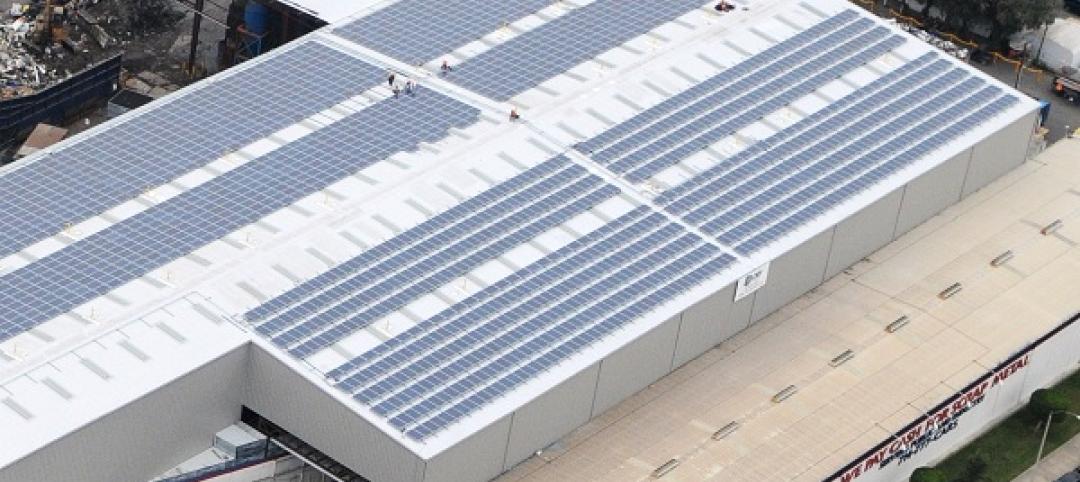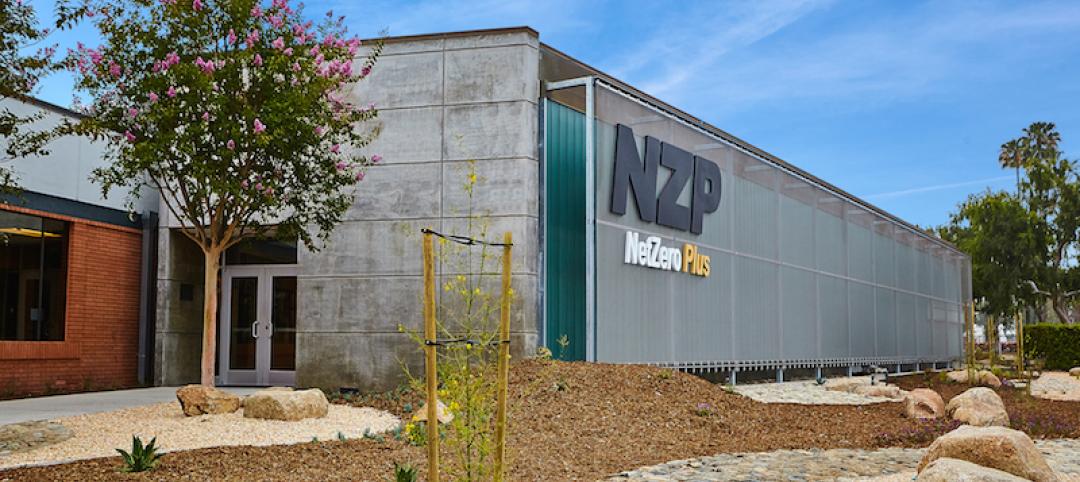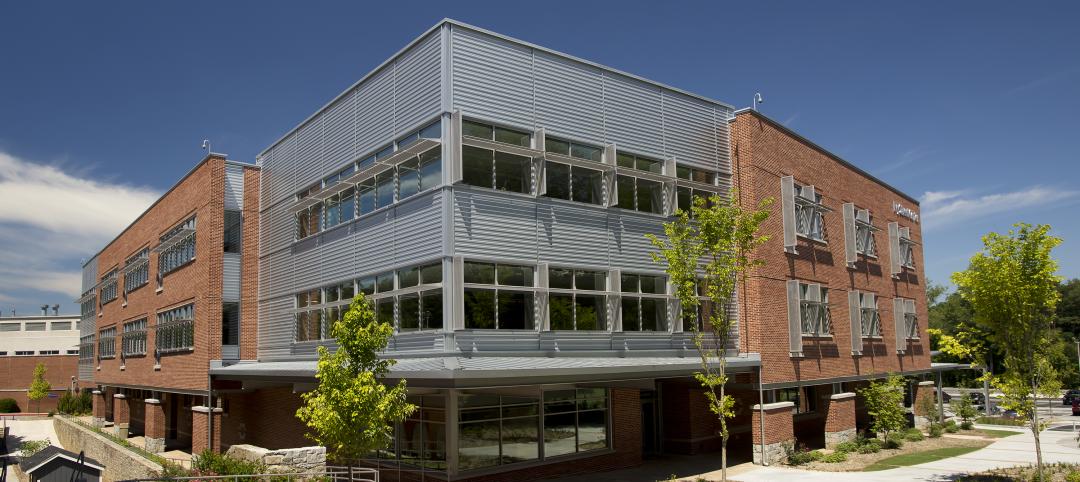During a recent investor and analyst conference call, George Oliver, chairman and CEO of Johnson Controls, revealed that his company is looking at potential building air-system upgrade projects valued at “a couple of hundred million” dollars in just the next year. Bloomberg reported that Honeywell International has more than $600 million worth of projects in its pipelines. Carrier Global Corp. estimates that the market for indoor-air quality improvements in buildings could eventually reach $10 billion.
However, these improvements won’t necessarily make buildings more energy efficient. Carbon Lighthouse, the energy savings as a service provider, recently surveyed its clients about how they were managing their buildings’ energy use during a pandemic that forced many employees to work remotely from home, leaving many buildings largely empty.
That poll found three-fifths of the clients’ building portfolios had lowered their energy consumptions by an average of only 23% (compared to an 80% average decline in occupancy most buildings experienced). In one-quarter of the clients’ buildings, there was no change in energy use during shelter-in-place.
These findings bring into sharp relief how COVID-19 has created a massive headwind against energy conservation and continues to pose a significant environmental challenge as building operators focus on HVAC upgrades and air-quality solutions. What’s more, some operators may be under the misconception that if buildings are empty, energy efficiency no longer needs to be a priority.
OCCUPANCY AND ENERGY USE DISCONNECT
Corroborating that assessment is Johnson Controls’ latest Energy Efficiency Indicator COVID-19 Pulse study, based on its survey last September of 150 commercial, institutional, and industrial facilities executives in the U.S. This survey included questions on coronavirus-related improvements, investments, and impacts.

Few buildings altered their energy usage commensurate with reductions in their occupants. Image: Johnson Controls
Perhaps the most sobering finding in Johnson Controls’ study is that the virus had not substantively reduced building energy consumption, regardless of reduced occupancy rates. During the pandemic, less than 10% of the organizations surveyed reduced their energy use by more than 20%. More typical were buildings that decreased their energy consumption by between 0-20%. More than 7% of the surveyed companies increased their energy use.
There could be several reasons for this, explains Clay Nesler, Johnson Controls' Vice President of Global Sustainability. “Even buildings in New York City, where occupancy can be at around 10%, space is still being leased with service agreements that require buildings to maintain temperatures.” Nesler also points out that, typically, more than 50% of a building's energy load is under its tenants' control. “How many refrigerators, computers, and monitors are still plugged in? What's going on with the lights?” He adds that many tenants have big data closets, “and those IT loads aren't going down.”
e
Making environments safer quickly during a health event is where facilities managers say investment dollars are flowing. Image: Johnson Controls.
Most facilities managers saw a more pressing need for flexibility that can quickly respond to emergency conditions. There was a significant increase, compared to last year, of facilities managers who view occupant safety as a critical driver of investment. Another important driver, said 85% of those polled, was energy cost savings.
DID SOMEONE SAY ‘TOUCHLESS’?

Improving indoor air quality is one of facilities managers' investment priorities. Image: Johnson Controls
When it came to actions in response to the virus’ spread, 60% of the survey’s participants said that plan to upgrade their HVAC and air filtration systems More than half had already conducted air-quality assessments, introduced elevated temperature scanning systems, and increased air filtration.
Nearly 90% of those polled by Johnson Controls said they had already implemented or planned to expand their employees’ work schedule flexibility. But there was less interest in such infection-control measures as introducing touchless entry and access, adding pre-scheduled occupant isolation rooms, or installed systems that track and trace social distancing.
Johnson Controls' Nesler acknowledges that energy efficiency can sometimes confliect with health and safe measures. But it doesn't have to be that way. He points specifically to Environmental, Social, and Governance assessments of sustainable buildings, conducted by the benchmarking firm GRESB, that found these buildings better able to regulate their energy uses, partly by giving tenants solutions to do so before an event hits.
“We believe the future is in control systems that go beyond “on” and “off” to include a pandemic mode” that would align with CDC and ASHRAE safety regulations, says Nesler. He adds that there might also be anther control for facilities managers that allow them to shut down a building's non-critical loads. “We think resilience will be a big thing going forward.”
Editor's note: Information from Clay Nesler of Johnson Controls was added to this story after its initial posting.
Related Stories
Sustainability | Sep 19, 2016
Brussels’ Botanic Center apartment block looks to live up to its name with the addition of 10,000 plants and a rooftop “Chrysalis”
The project, which has been commissioned and is in the design phase, would eliminate CO2 and produce its own energy.
Energy | Sep 13, 2016
Oberlin College to hold conference on post-fossil fuel economy
The gathering will address climate change and new sources of energy.
Sustainability | Aug 30, 2016
New federal project plans must include climate impacts
Agencies must quantify the specific impacts when possible.
Energy Efficiency | Aug 17, 2016
Investor Confidence Project aimed at raising trustworthiness on energy efficiency projects
The new initiative screens projects to see if they are investor-ready.
Sponsored | Energy Efficiency | Jul 27, 2016
Metal Roofs Have Solar Advantage
A large roof can become a resource that saves significant money on energy consumption and helps reduce emissions of CO2 and it turns out metal roofs make excellent hosts for solar panels.
Sponsored | Energy Efficiency | Jul 8, 2016
Solar carports power Major League Soccer stadium in Utah
Wanting to capitalize on the abundant energy produced by the sun, the Real Salt Lake professional soccer club built carports in the parking lot using MBCI metal roofing with solar panels. The panels generate 73% of the stadium’s total power needs.
Energy Efficiency | Jun 13, 2016
The nation’s largest net zero-plus commercial building retrofit opens in L.A.
The goal of the Net Zero Plus Electrical Training Institute is for this structure to become a model for emergency operations centers for communities.
Sustainability | Jun 8, 2016
New program certifies the performance of existing buildings in the U.S.
BREEAM USA, an offshoot of a program already in place in Europe, aims to ease the point of entry.
Sponsored | Energy Efficiency | May 16, 2016
Metal wall panels’ deep shadow lines break up massing of Georgia school
Marist School, a private Roman Catholic college preparatory school, creates a highly-sustainable structure on its campus.
Green | May 16, 2016
Development team picked for largest Passive House project in North America
The 24-story curved building would be 70% more efficient than comparable housing in New York City.















